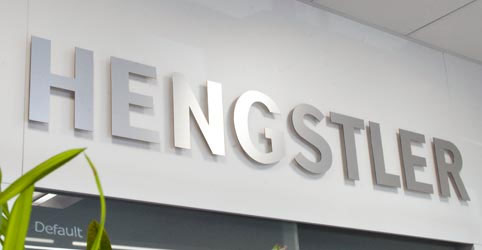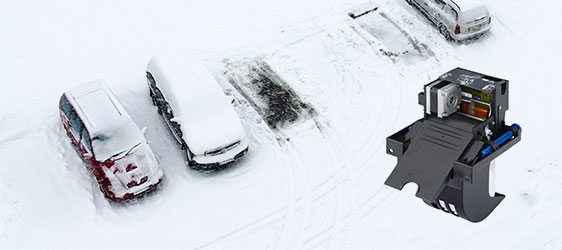
When selecting thermal printers for kiosk print mechanisms, some factors cannot be changed and must be designed around. These include environmental conditions, available space and resulting printer orientation and certifications that may be required for hazardous areas.
Environmental conditions such as indoor/outdoor and variations in temperature and humidity affect the whole application and must be considered. The conditions affect the control boards, power supply, display, printer, thermal paper, etc. where specific measures would have to be taken such as conformal coating to avoid short circuits, creeping current or corrosion of connectors. Another action could be to encapsulate the electronics against condensed water. That is way some printer manufacturers offer outdoor versions of their printers. These printers can operate within temperature ranges between -25°C to +70°C. This can often only be achieved by coating the control board of the printer or taking encapsulation measures.

Some applications would require cooling or heating mechanisms to stabilize temperature and humidity in geographical regions with wide temperature ranges. But these are expensive, require maintenance, service calls, increase total cost of ownership and increase power consumption and require power, where power might not be available.
At the end of the day the available space inside the enclosure will be the limiting factor when choosing the way that the media should be supplied. Remember we talked about large media rolls with a certain diameter needing a dancer bar to pre-pull paper from the roll? Or presenters that can only be used horizontally and need enough space for the paper to form a loop before being presented? When making all these decisions beforehand always keep in mind how much space there will be available inside the application.
Deciding to use a paper bin to present tickets is useless if there is no space available for it or a presenter when there is no space for the paper to form a loop. Space constraints in the application determine the size of the printer, the position of the printer, the paper supply and the way the printout is presented. If there is less space available, you would ideally keep the printer and paper supply as compact as possible. More space would mean you can be more generous with the printer size, positioning, presentation and paper supply.
From our experience we can tell you that you will be using every available inch to fit everything into the cabinet. That is why we have seen the oddest shaped paper bins, just to fill out the space. But also consider the serviceability of your application. Make it as simple and easy as possible to change paper, no matter if roll or fan-fold. Kiosks that are designed to provide easy access for media loading and access to the printer enable for efficiency over models that take longer to service. Keep in mind that jam clearance and paper loading will be done by untrained staff, most of the time.
Think of a reverse vending machine at a grocery store; when the printer is out of paper, a store clerk will load the paper and not the service technician. Most staff interactions with the application will be with the printer, so it is important to look more closely at printer orientation and paper loading. Media capacity is just one of many easily overlooked design considerations that contribute to reliability and efficiency of an application.
The orientation of the printer depends on the space available and on how you want the customer to interact with the kiosk. There are three ways in which the printout can be presented to the customer: horizontally with or without presenter, vertically and at an angle. The way the printout is ejected out of the application is related to the design and layout. Vertically or at an angle presented tickets typically drop into a bin that is closed by a flap or slide to prevent the printout from being blown away.
If you are using a presenter you only have one option of presenting the printout, namely horizontally, no matter if the paper loop is formed upwards or downwards. Pay machines would be a good example of an application using horizontally printout presentation. The way the printer is oriented in an application is based on the decisions made beforehand: paper configuration, paper supply size, presenter, cutter type, etc.
One necessary and “painful” point when designing a kiosk is to consider required approvals and compliance regulations. What’s a great application worth when it can’t be sold due to missing approvals? Depending into which geographical region the application is going to be sold to, different approvals might be required. They also certify legal evidence and assurance in some cases. Which approvals are required for application would have to be checked upfront before starting the design of the application? Therefore, we highly recommend that you check what is mandatory for each geographical region.
There are companies who offer this type of service and can support you with this, if you are unsure. The most common approval marks are CE for Europe and UL/CSA for North America. RoHS and REACH have become international recognized compliance certificates when it comes to material usage. Please consult specialists before investing too much money in your new application.
The HENGSTLER team is expert in matching printers to the application. Whether it’s gas pump receipts, bank statement printers, railway ticketing systems, kiosks, fire alarm systems, or just about anything else, we’ve seen it and can help locate and integrate the best-suited printer for the purpose needed. Moreover, we can support our customers effectively by offering tailor-made application projects. Contact us today with your application or challenge